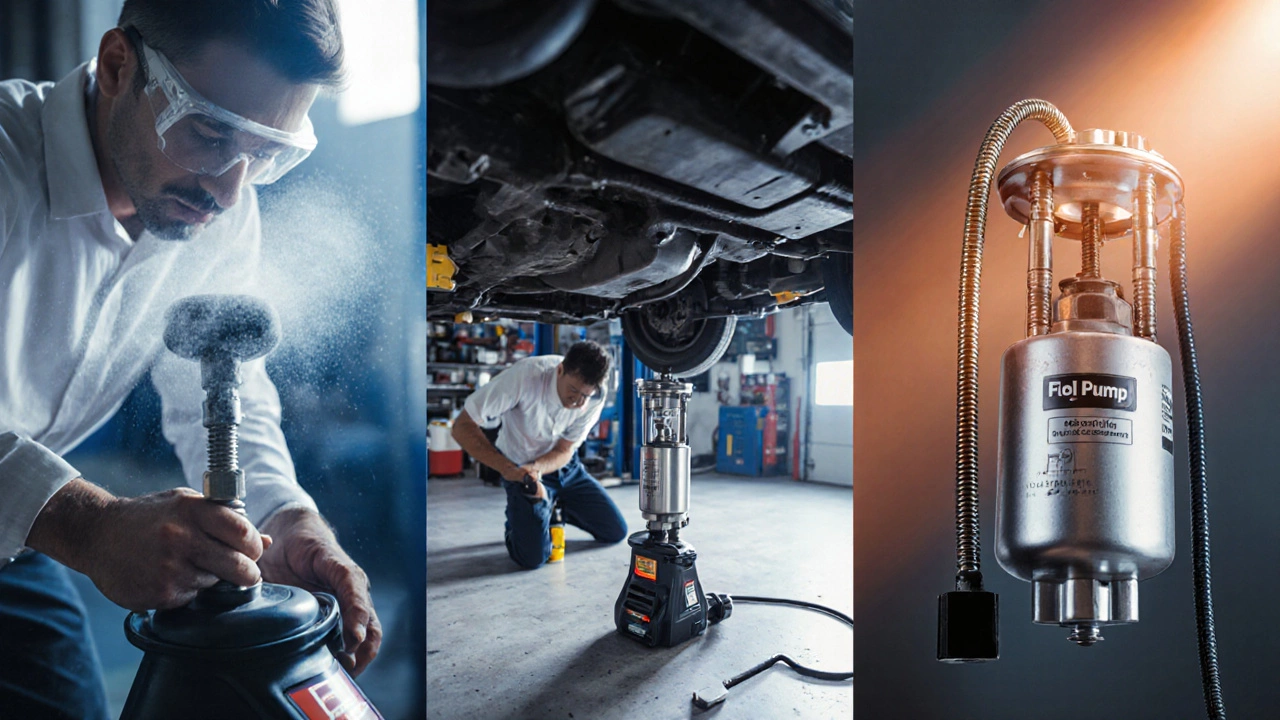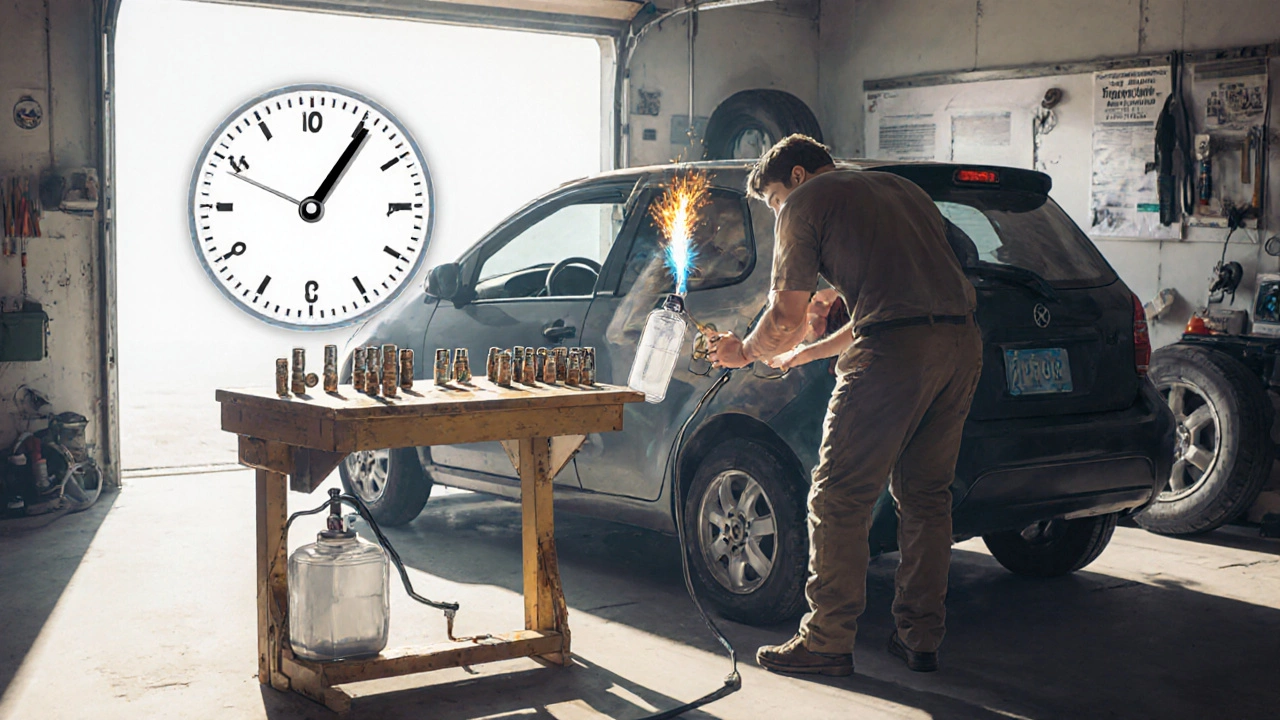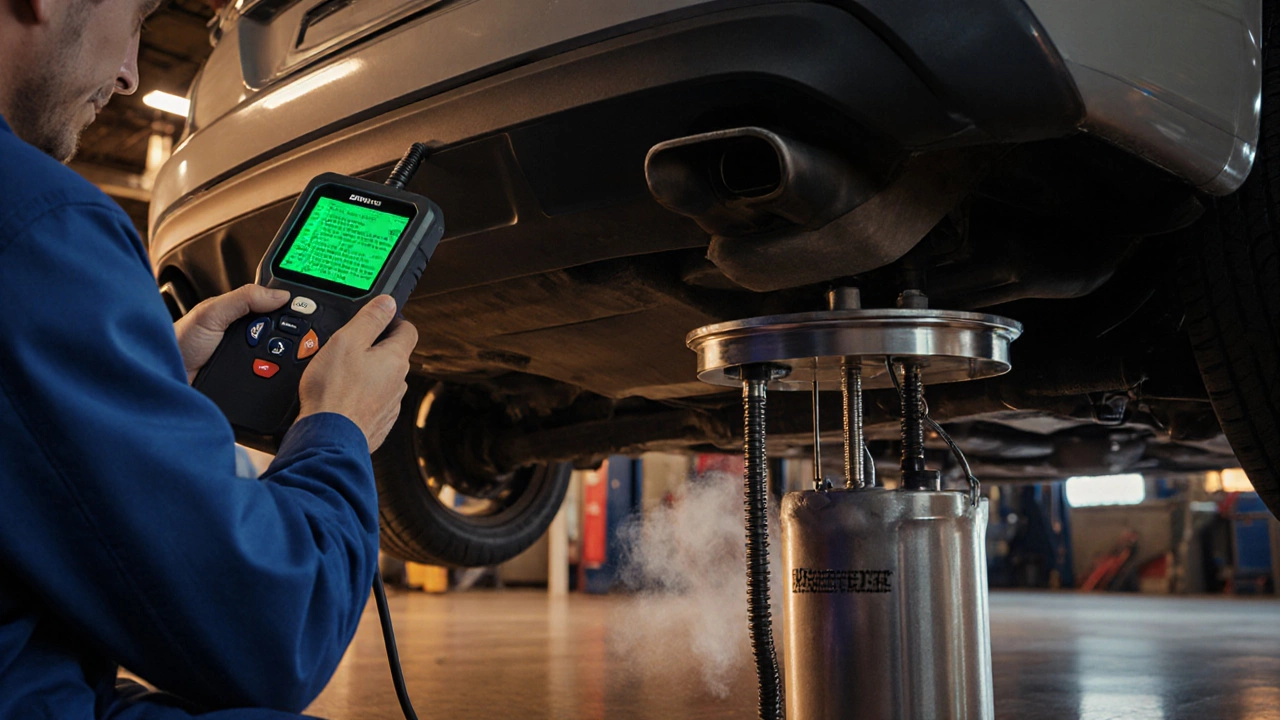Fuel Pump Repair Time Estimator
Fuel pump is a mechanical device that moves gasoline from the tank to the engine’s fuel injection system. When it starts acting up, you’ll hear the engine sputter, lose power, or even stall. The big question most drivers ask is: how long will it actually take to fix it? Below we break down everything that affects the timeline, from a quick DIY swap to a shop‑floor job, so you can set realistic expectations before you roll up your sleeves or book an appointment.
What Triggers a Fuel Pump Repair?
Before we talk timing, it helps to know why a pump fails in the first place. Common culprits include:
- Contaminated fuel - water or debris can corrode internal parts.
- Worn bearings - mileage builds up friction, slowing the pump.
- Electrical issues - a bad fuel pump relay or failing wiring can prevent the pump from receiving power.
- Overheating - a clogged fuel filter forces the pump to work harder.
Spotting the symptoms early can shave days off the repair because you won’t need extensive diagnostics.
Typical Steps in a Professional Repair
A qualified mechanic follows a fairly standard workflow:
- Connect a diagnostic scanner to read any fuel‑system error codes.
- Relieve fuel system pressure - a safety valve prevents fuel spray.
- Remove the fuel tank or gain access via the under‑car panel (varies by model).
- Disconnect wiring, fuel lines, and the mounting bracket.
- Swap the old pump for a new fuel pump replacement unit.
- Re‑assemble, refill the system, and run a post‑repair test.
Each of these steps can be quick or time‑consuming depending on the vehicle’s design.
How Long Does a Shop Usually Take?
Based on data from 150 repair bays across Australia (2024 auto‑service survey), the average shop turnaround looks like this:
| Service type | Typical duration | Notes |
|---|---|---|
| Standard replacement (tank removal) | 2‑4 hours | Most common for sedans, hatchbacks. |
| In‑tank pump (requires tank drop) | 4‑6 hours | V8s, SUVs - tank must be unbolted. |
| Diagnostic‑only (no pump needed) | 30‑45 minutes | Often a faulty relay or sensor. |
| DIY hand‑off (customer brings pump) | 1‑2 hours | Labor only, no part sourcing. |
These figures assume a typical workday schedule and no parts back‑ordering. Anything beyond the top range usually means the mechanic ran into a rust‑ed bolt, a hidden leak, or a mis‑firing injector that needed extra attention.

DIY Repair: Can You Do It Faster?
Many owners opt to replace the pump themselves to save money. The DIY timeline hinges on three variables:
- Tools available - A set of hand tools, a floor jack, and a fuel‑line disconnect tool are non‑negotiable.
- Vehicle accessibility - Cars with a rear‑mounted tank (e.g., most Japanese models) are easier than those with a side‑mount (e.g., many German cars).
- Experience level - First‑time DIYers should add a safety buffer of 1‑2 hours for troubleshooting.
For a straightforward sedan, most seasoned hobbyists finish the swap in about 2 hours. If you need to drop the whole tank, expect 4 hours plus a few extra for cleaning up spilled fuel.
Factors That Can Extend the Repair Time
Even with a clear plan, certain issues can stretch the clock:
- Corroded bolts - In older cars, the tank bolts can be seized, requiring heat or impact tools.
- Fuel line contamination - If the line is clogged, you may need to flush it, adding 30‑45 minutes.
- Electrical diagnostics - Intermittent pump failure sometimes originates from a failing ECU pin, which can take an extra hour of scanning.
- Parts availability - Waiting for an OEM pump (see table below) can add a day or more.
Being aware of these pitfalls helps you plan a realistic appointment window.
OEM vs Aftermarket: Which Affects Time the Most?
Choosing between an OEM fuel pump and an aftermarket fuel pump can change both cost and timing. OEM units often come pre‑tested and fit perfectly, meaning the installer spends less time adjusting brackets. Aftermarket parts sometimes need minor modifications or extra sealing steps.
| Aspect | OEM | Aftermarket |
|---|---|---|
| Fitment | Exact factory match | May require adaptors |
| Testing | Pre‑tested by manufacturer | Usually self‑tested; extra bench test recommended |
| Installation time | 2‑3 hours (typical) | 3‑4 hours (extra adjustments) |
If you’re racing against a deadline, an OEM pump is the safer bet for a quicker finish.

Key Takeaways
- Standard shop replacement usually takes 2‑4 hours; in‑tank jobs can climb to 6 hours.
- DIY swaps on easy‑access vehicles are often done in about 2 hours.
- Corroded bolts, fuel‑line cleaning, and part back‑orders are the top time‑sucking culprits.
- OEM pumps tend to shave an hour off the install compared with aftermarket units.
- Always budget an extra hour for safety checks and post‑repair testing.
Frequently Asked Questions
How can I tell if my fuel pump needs replacement?
Typical signs are a whining noise from the rear of the car, hard starts, stalling at low speeds, and a loss of power under acceleration. A diagnostic scanner will often flash a P0087 (fuel pressure too low) or P0088 (fuel pressure too high) code.
Do I need to drain the fuel tank before a pump swap?
Yes. Relieving pressure is mandatory for safety, and most shops will siphon the tank or use a pump‑out tool. Attempting the job with a full tank raises the risk of fuel spray and fire.
Can a bad fuel pump relay be mistaken for a pump failure?
Absolutely. The relay controls power to the pump. Swapping a relay is far quicker-usually under 30 minutes-so a proper scan can save a costly pump replacement.
Is it safe to drive with a failing fuel pump?
Not really. You risk sudden stalling, especially on highways. If the engine sputters or you see a low‑fuel‑pressure warning, arrange transport or a tow immediately.
What tools do I need for a DIY fuel pump replacement?
A set of metric sockets, a floor jack with jack stands, a fuel‑line disconnect tool, safety gloves, a container for any spilled fuel, and optionally a torque wrench for proper bolt tightening.
Next Steps If You’re Stumped
If the repair window stretches beyond the estimates above, consider these actions:
- Ask the shop for a detailed time sheet to pinpoint the bottleneck.
- Request a loan‑car quote if you need mobility while the pump is being sourced.
- Check online forums for your specific make and model; many owners share shortcuts for stubborn bolts.
- If you’re DIY‑inclined, watch a step‑by‑step video for your vehicle year; visual cues save minutes.
Knowing the typical fuel pump repair time lets you schedule work, avoid surprise bills, and keep your car on the road when you need it most.




